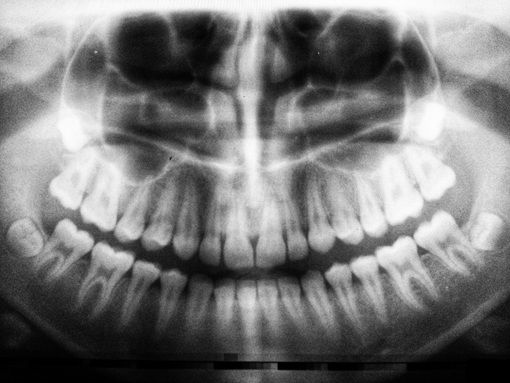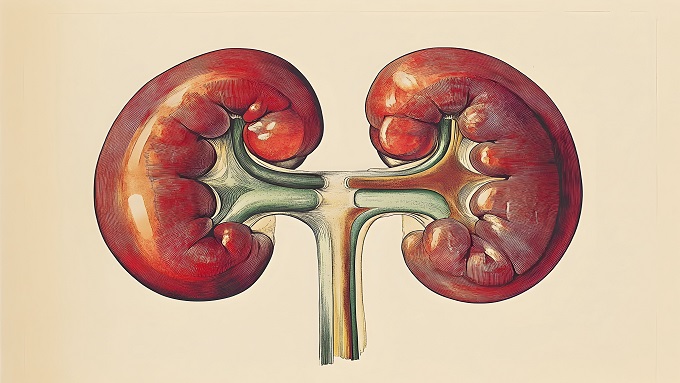Conservative and Radical Surgery vs. BRAF-Target Therapy for Recurrent Ameloblastoma

Downloads
Highlights
- Ameloblastoma is a widely discussed odontogenic tumor, yet research on less invasive treatment options for recurrent cases remains limited.
- BRAF-targeted therapy offers a less invasive approach that may reduce the extent of surgical intervention required.
ABSTRACT
Background: Ameloblastoma is a benign odontogenic tumor that can affect surrounding tissues and is prone to recurrence if not completely excised. Surgical therapy is currently the primary treatment modality. However, recurrences are common following prior surgical interventions. Recently, a novel approach involving BRAF (B-Rapidly Accelerated Fibrosarcoma)-targeted therapy has been introduced, aiming to prevent molecular mutations. This therapy is non-invasive, but its efficacy in treating recurrent ameloblastoma remains uncertain. Objective: This article aimed to compare the outcomes of conservative and radical surgery with BRAF-targeted therapy in the management of recurrent ameloblastoma. Material and Method: An electronic search was conducted using the PubMed and Scopus databases. Relevant studies were selected based on predefined inclusion criteria. Results: A total of nine studies were included in the analytical synthesis. Recurrence in ameloblastoma is often due to residual tumor tissue located in anatomically challenging areas following surgery. BRAF-targeted therapy has emerged as a promising option for patients with recurrent disease, offering precise tumor targeting and potentially reducing the need for further surgical intervention. Conclusion: Surgical and BRAF-targeted therapies each offer benefits in managing recurrent ameloblastoma. While recurrence is often linked to residual tumors in complex anatomical areas, BRAF-targeted therapy provides a non-invasive, precise alternative—especially for patients with multiple recurrences. It can reduce tumor size, improve lesion localization, and potentially limit the need for extensive surgery.
Abramson, Z., Dayton, O. L., Drane, W. E., Mendenhall, W. M., Kaye, F. J. 2022. Managing stage 4 ameloblastoma with dual BRAF/MEK inhibition: A case report with 8-year clinical follow-up. Oral Oncology, 128: 105854. doi: 10.1016/j.oraloncology.2022.105854.
Adeel, M., Rajput, M. S. A., Arain, A. A., Baloch, M., Khan, M. 2018. Ameloblastoma: Management and outcome. Cureus. doi: 10.7759/cureus.3437.
Angelina, R., Kodariah, R. 2016. The role and mechanism of BRAF in malignancy. Pratista Patologi, 5(1). Available at: https://majalahpratistapatologi.com/p/index.php/journal/article/view/50.
Aramanadka, C., Kamath, A. T., Kudva, A. 2018. Recurrent ameloblastoma: A surgical challenge. Case Reports in Dentistry, 2018: 1–6. doi: 10.1155/2018/8271205.
Bilici, I. Ş., Emes, Y., Yalçın, S., Aybar, B. 2016. Infratemporal fossa infection with inferior alveolar nerve involvement. Journal of Istanbul University Faculty of Dentistry, 50(3). doi: 10.17096/jiufd.34851.
Broudic-Guibert, M., Blay, J.Y., Vazquez, L., Evrard, A., Karanian, M., Taïeb, S., Hoog-Labouret, N., Oukhatar, C. M. A., Boustany-Grenier, R., Arnaud, A. 2019. Persistent response to vemurafenib in metastatic ameloblastoma with BRAF mutation: A case report. Journal of Medical Case Reports, 13(1): 245. doi: 10.1186/s13256-019-2140-6.
Brunet, M., Khalifa, E., Italiano, A. 2019. Enabling precision medicine for rare head and neck tumors: The example of BRAF/MEK targeting in patients with metastatic ameloblastoma. Frontiers in Oncology, 9. doi: 10.3389/fonc.2019.01204.
Büttner, R., Gültekin, S. E., Heydt, C., Nogova, L., Meemboor, S., Kreppel, M., Aziz-Heiloun, R. 2023. Efficiency of B-RAF-/MEK-inhibitors in B-RAF mutated ameloblastoma: Case report and review of literature. Heliyon, 9(12): e23206. doi: 10.1016/j.heliyon.2023.e23206.
Faden, D. L., Algazi, A. 2017. Durable treatment of ameloblastoma with single agent BRAFi Re: Clinical and radiographic response with combined BRAF-targeted therapy in stage 4 ameloblastoma. JNCI: Journal of the National Cancer Institute, 109(1). doi: 10.1093/jnci/djw190.
Fernandes, G. S., Girardi, D. M., Bernardes, J. P. G., Fonseca, F. P., Fregnani, E. R. 2018. Clinical benefit and radiological response with BRAF inhibitor in a patient with recurrent ameloblastoma harboring V600E mutation. BMC Cancer, 18(1): 887. doi: 10.1186/s12885-018-4802-y.
Ghai, S. 2022. Ameloblastoma: An updated narrative review of an enigmatic tumor. Cureus. doi: 10.7759/cureus.27734.
Gong, S., Xu, D., Zhu, J., Zou, F., Peng, R. 2018. Efficacy of the MEK inhibitor cobimetinib and its potential application to colorectal cancer cells. Cellular Physiology and Biochemistry, 47(2): 680–693. doi: 10.1159/000490022.
Gutiérrez-Castañeda, L. D., Nova, J. A., Tovar-Parra, J. D. 2020. Frequency of mutations in BRAF, NRAS, and KIT in different populations and histological subtypes of melanoma: A systemic review. Melanoma Research, 30(1): 62–70. doi: 10.1097/CMR.0000000000000628.
Hendra, F. N., Natsir Kalla, D. S., Van Cann, E. M., de Vet, H. C. W., Helder, M. N., Forouzanfar, T. 2019. Radical vs. conservative treatment of intraosseous ameloblastoma: Systematic review and meta‐analysis. Oral Diseases, 25(7): 1683–1696. doi: 10.1111/odi.13014.
Hendra, F. N., Van Cann, E. M., Helder, M. N., Ruslin, M., de Visscher, J. G., Forouzanfar, T., de Vet, H. C. W. 2020. Global incidence and profile of ameloblastoma: A systematic review and meta‐analysis. Oral Diseases, 26(1): 12–21. doi: 10.1111/odi.13031.
Hresko, A., Palyvoda, R., Burtyn, O., Chepurnyi, Y., Kopchak, A., Helder, M., Forouzanfar, T. 2022. Recurrent ameloblastoma: Clinical manifestation and disease-free survival rate. Journal of Oncology, 2022: 1–6. doi: 10.1155/2022/2148086.
Jang, S., Atkins, M. B. 2013. Treatment of BRAF-mutant melanoma: The role of vemurafenib and other therapies. Clinical Pharmacology & Therapeutics, 95(1): 24–31. doi: 10.1038/clpt.2013.197.
Kaye, F. J., Ivey, A. M., Drane, W. E., Mendenhall, W. M., Allan, R. W. 2014. Clinical and radiographic response with combined BRAF-targeted therapy in stage 4 ameloblastoma. JNCI Journal of the National Cancer Institute, 107(1): 378–378. doi: 10.1093/jnci/dju378.
Malakar, A., Kumar, V. R., Yadav, P., Bhardwaj, V., Barua, C. G., Bhardwaj, G. 2023. The role of BRAF inhibitors in the management of ameloblastoma: A literature review. Cureus. doi: 10.7759/cureus.47682.
Masthan, K. M. K., Anitha, N., Krupaa, J., Manikkam, S. 2015. Ameloblastoma. Journal of Pharmacy And Bioallied Sciences, 7(5): 167. doi: 10.4103/0975-7406.155891.
Page, M. J., McKenzie, J. E., Bossuyt, P. M., Boutron, I., Hoffmann, T. C., Mulrow, C. D., Shamseer, L., Tetzlaff, J. M., Akl, E. A., Brennan, S. E., Chou, R., Glanville, J., Grimshaw, J. M., Hróbjartsson, A., Lalu, M. M., Li, T., Loder, E. W., Mayo-Wilson, E., McDonald, S., McGuinness, L. A., … Moher, D. (2021). The PRISMA 2020 statement: an updated guideline for reporting systematic reviews. BMJ (Clinical research ed.), 372, n71. doi: 10.1136/bmj.n71.
Poulikakos, P. I., Sullivan, R. J., Yaeger, R. 2022. Molecular pathways and mechanisms of BRAF in cancer therapy. Clinical Cancer Research, 28(21): 4618–4628. doi: 10.1158/1078-0432.CCR-21-2138.
Proietti, I., Skroza, N., Michelini, S., Mambrin, A., Balduzzi, V., Bernardini, N., Marchesiello, A., Tolino, E., Volpe, S., Maddalena, P., Di Fraia, M., Mangino, G., Romeo, G., Potenza, C. 2020. BRAF inhibitors: Molecular targeting and immunomodulatory actions. Cancers, 12(7): 1823. doi: 10.3390/cancers12071823.
Ranchod, S., Titinchi, F., Behardien, N., Morkel, J. 2021. Ameloblastoma of the mandible: analysis of radiographic and histopathological features. Journal of Oral Medicine and Oral Surgery, 27(1): 6. doi: 10.1051/mbcb/2020051.
Shan, K. S., Rehman, T. U., Ivanov, S., Domingo, G., Raez, L. E. 2024. Molecular targeting of the BRAF proto-oncogene/mitogen-activated protein kinase (MAPK) pathway across cancers. International Journal of Molecular Sciences, 25(1): 624. doi: 10.3390/ijms25010624.
Shi, H. A., Ng, C. W. B., Kwa, C. T., Sim, Q. X. C. 2021. Ameloblastoma: A succinct review of the classification, genetic understanding and novel molecular targeted therapies. The Surgeon, 19(4): 238–243. doi: 10.1016/j.surge.2020.06.009.
Tan, S., Pollack, J. R., Kaplan, M. J., Colevas, A. D., West, R. B. 2016. BRAF inhibitor treatment of primary BRAF -mutant ameloblastoma with pathologic assessment of response. Oral Surgery, Oral Medicine, Oral Pathology and Oral Radiology, 122(1): e5–e7. doi: 10.1016/j.oooo.2015.12.016.
Verma, D. S., Das, D. D. 2022. Recurrent ameloblastoma of mandible - A case report. International Journal of Applied Dental Sciences, 8(3): 29–32. doi: 10.22271/oral.2022.v8.i3a.1576.
Yang, Y.C., Wang, J.J., Huang, Y., Cai, W.X., Tao, Q. 2021. Development and validation of a prognostic nomogram for postoperative recurrence-free survival of ameloblastoma. Cancer Management and Research, 13: 4403–4416. doi: 10.2147/CMAR.S307517.
Yang, Z., Chen, S., Ying, H., Yao, W. 2022. Targeting syndecan-1: New opportunities in cancer therapy. American Journal of Physiology-Cell Physiology, 323(1): C29–C45. doi: 10.1152/ajpcell.00024.2022.
Zhukov, N., Mareeva, Y., Konovalov, D., Druy, A., Grachev, N., Litvinov, D. 2019. Potentially curative targeted therapy for undifferentiated high-grade sarcoma developing after malignant transformation of a BRAF V600E–mutated ameloblastic fibroma. JCO Precision Oncology, 3: 1–6. doi: 10.1200/PO.19.00282.
Copyright (c) 2025 Dimas Bramanto Satrya Utama, Nadia Maulida Andini, Afif Surya Adena

This work is licensed under a Creative Commons Attribution 4.0 International License.
1. The journal allows the author(s) to hold the copyright of the article without restrictions.
2. The journal allows the author(s) to retain publishing rights without restrictions.
3. The legal formal aspect of journal publication accessibility refers to Creative Commons Attribution 4.0 International License (CC-BY).
































